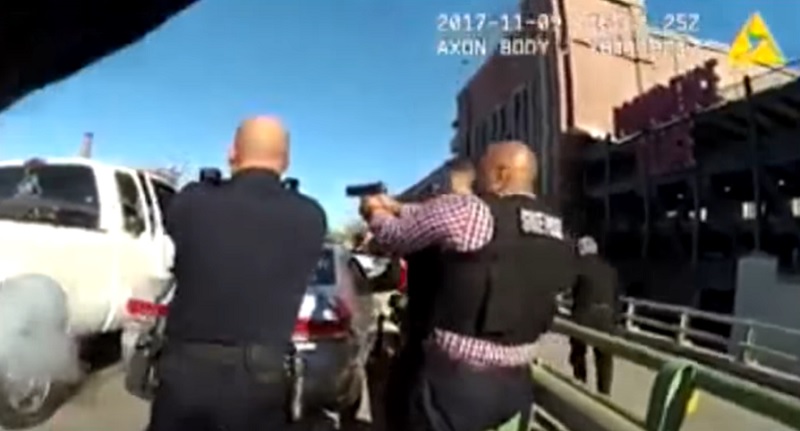
Why did they have to shoot him? That is the primary question that is asked after police use deadly force. Could they have done something less lethal to end the threat? Good question, and one that must be answered in every case in which a suspect is shot by a police officer.
In examining this issue the emotion of seeing or imagining violence can become, especially for the critic, the predominant consideration for determining what the officer “should have” done. The only objective way to examine a use of force is by determining, to the extent possible, the physics of time, space, and motion, as well as the human limitations of perception and reaction.
One cannot overemphasize the central role of time in use of force decisions. The time unit of one second is not small enough to identify what happens in deadly force situations. The trigger of a firearm can be pulled multiple times in less than a second. Punches and stabs happen in less than a second. Violence against a police officer or other citizen can happen before the mind perceives danger and tells the body how to react.
In a 30-year study of murders of police officers, FBI statistics revealed that nearly 70% of officers were shot within 10 feet, and of those more than half were shot within a distance of 5 feet. The proximity of these attackers speeds up the decision and reaction times necessary to respond to an attack. It is well established that an assailant can make violent body contact with an officer from about 15 feet away in less than one second which is faster than an average officer can draw their weapon and fire 2 shots.
We also know that a gunshot rarely has the immediate effect of stopping a violent attack. Obviously, less lethal tools of force have less potential effect in stopping an armed subject, which is why a firearm is the officer’s best option when facing a person presenting deadly force to them or another innocent citizen.
Electrical Conductivity Weapons (ECWs such as the Taser) are a viable option for stopping a person resisting arrest or commencing an attack. Since the Taser is not deadly force, it is not a match for a suspect presenting a deadly weapon. If the opportunity exists for an officer to use a Taser on a person with a weapon, there must be another officer present who can use deadly force. The time and distance constraints would not allow an officer to effectively transition from the ECW to a firearm if the ECW failed to stop the attacker.
The Taser can fail if the wired probes do not attach due to thick clothing, suspect movement, or if they get embedded too close together to provide an effective circuit. Effective probe placement is designed to immobilize a suspect for a brief period of time to allow officers to restrain them. If a Taser is deployed directly against a suspect, immobilization does not take place and the shock only acts as a pain compliance tool which can also fail or even worsen the resistance.
Other tools that an officer might have immediately available include pepper spray. This effective spray, when applied directly to the face, can cause a suspect to stop or slow down as it interferes with breathing and vision, as well as causing pain. There is no guarantee that pepper spray will work on everyone, not that a person will stop attacking if sprayed. If used in very close contact the officers might be also exposed and be at some disadvantage from the chemical’s effects. It is not an appropriate tool to be used against an immediate deadly threat.
A recently developed less lethal restraint device shoots weighted lines designed to wrap around a suspect’s legs to immobilize them. It is not designed for deployment at less than ten feet and would not disable a person with hands and arms in an attack posture.
Other options include less lethal projectiles such as bean bag rounds from a modified shotgun, but those devices are not immediately accessible and carry the possibility of serious injury to a suspect.
Alternatives to firearm use in stopping a violent attack or subject resisting arrest are valuable and lifesaving. When time and circumstances make their use a wise decision, officers are happy to have them. Nevertheless, the only magic bullet for dealing with an immediate deadly threat remains an actual bullet.